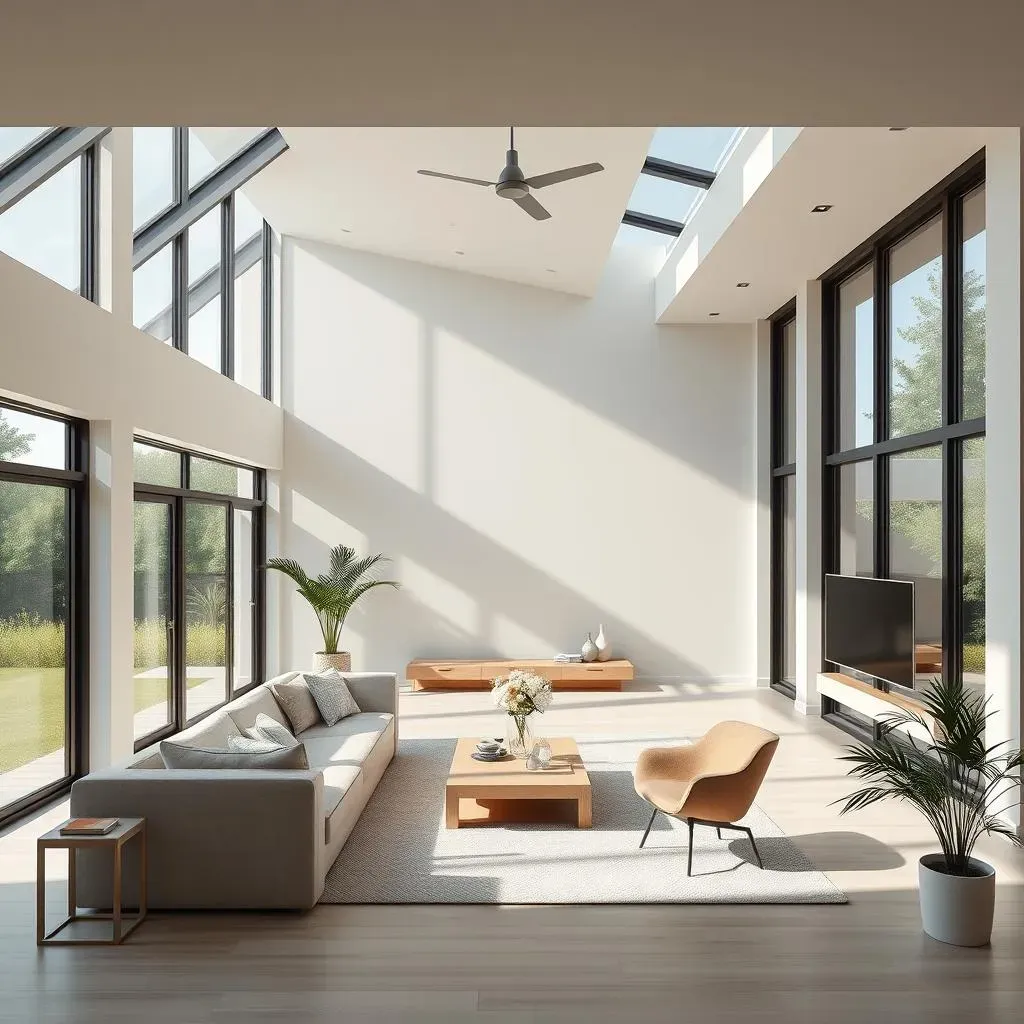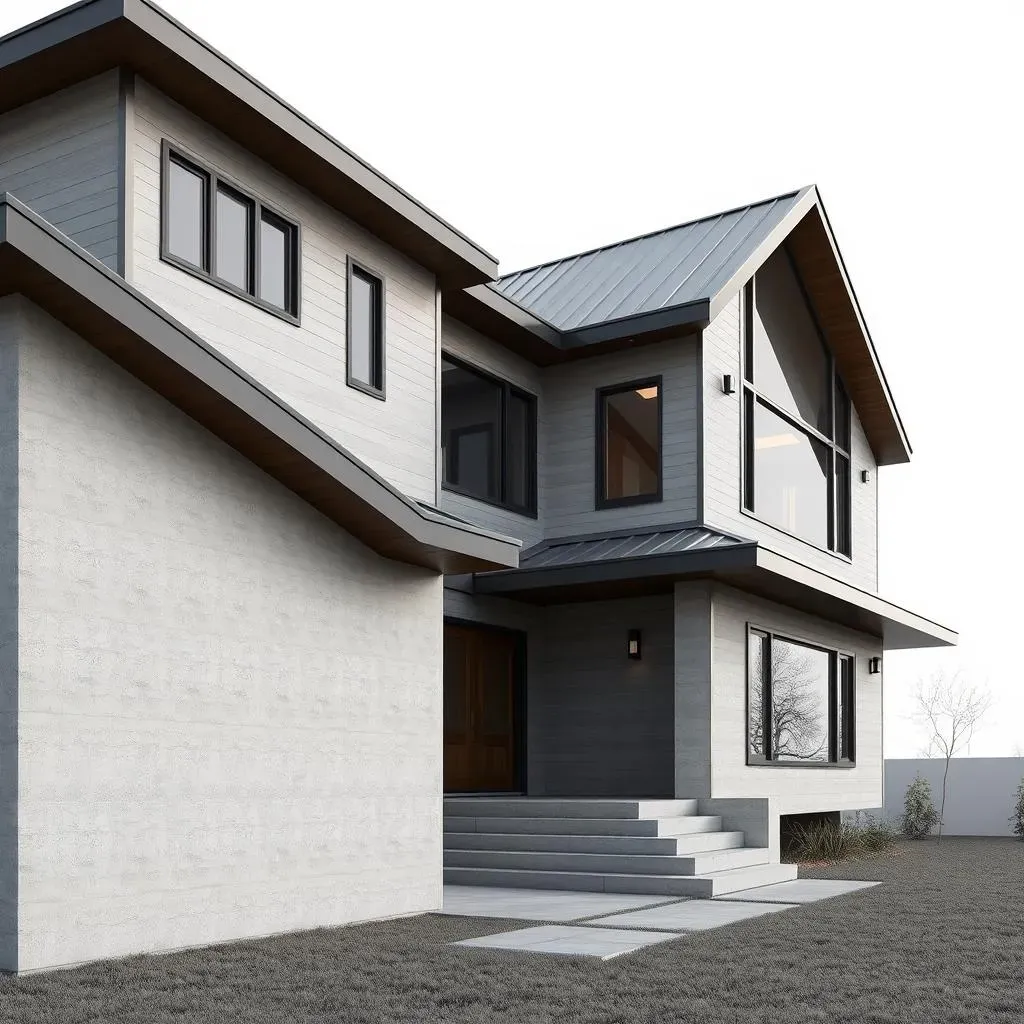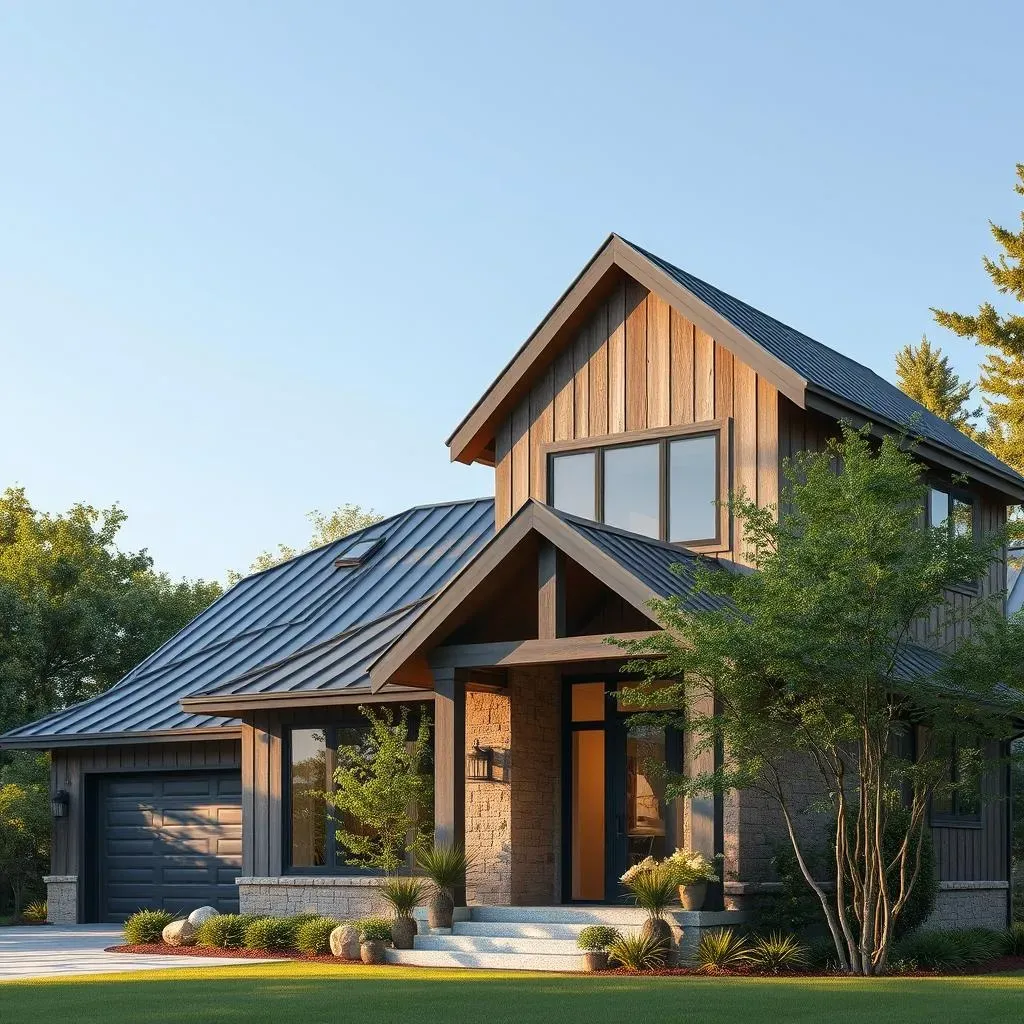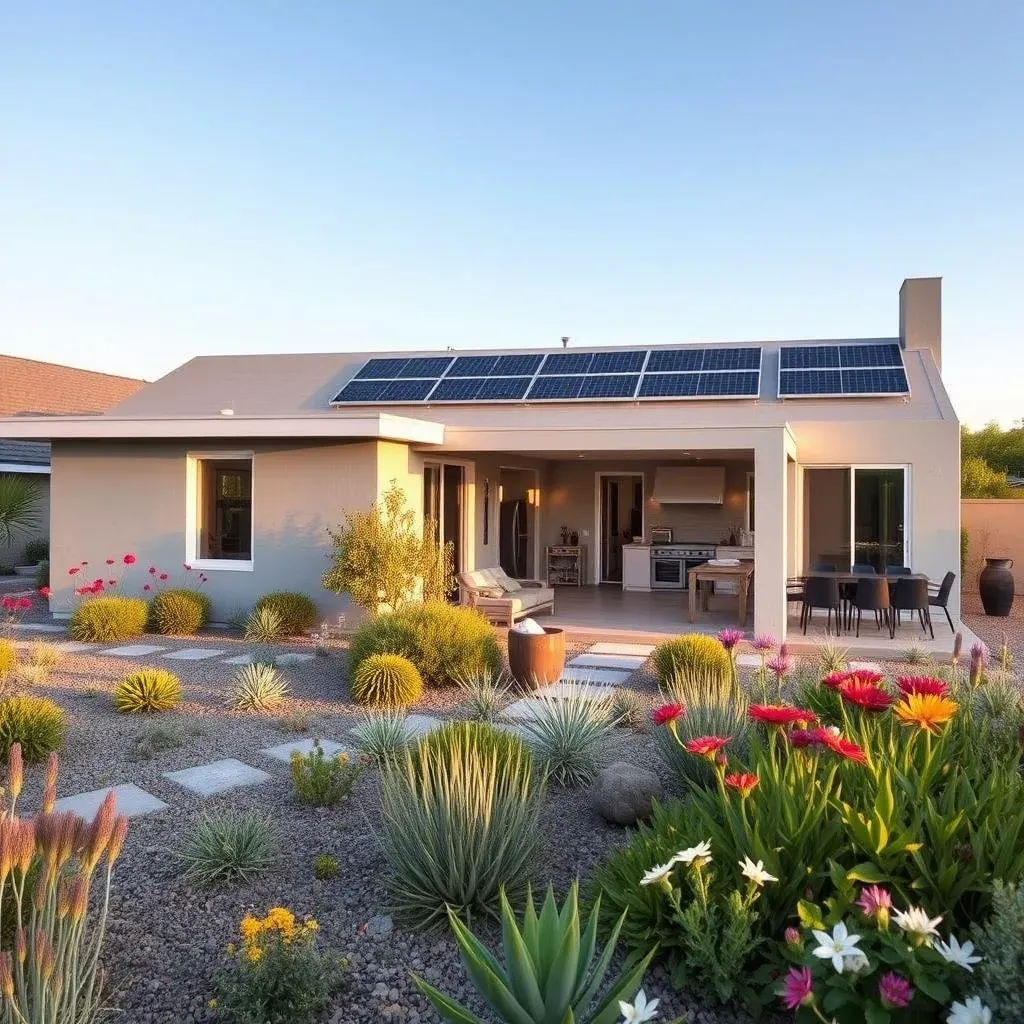Table of Contents
Tired of endless weekend chores? What if your home could take care of itself? Imagine a place where you spend less time fixing things and more time enjoying life. That's the promise of a zero maintenance house. This isn't some futuristic fantasy; it's an achievable goal through smart design and material choices. In this article, we'll explore how to create a home that minimizes upkeep without sacrificing style or comfort. We'll walk you through the core ideas of low-maintenance design and architecture, and then talk about selecting the right materials, from durable roofing to easy-clean surfaces. We’ll even look at how technology and smart landscaping can help you achieve a truly hands-off home. Finally, we'll tackle the question of cost, because let's be real, nobody wants to spend a fortune on a house that's supposed to save them time and money. So, get ready to discover how you can have a home that works for you, not the other way around.
Understanding Zero Maintenance Home Design
Understanding Zero Maintenance Home Design
What Does Zero Maintenance Really Mean?
Okay, let's be real, no house is truly zero maintenance. It's more of a goal, a philosophy if you will. We're talking about minimizing the work, not eliminating it completely. Think of it like this: you're not trying to create a hermetically sealed box, but a home that works with you, not against you. A zero maintenance design focuses on smart choices at every stage, from the initial planning to the final finishes. It's about selecting materials that don’t require constant upkeep, and using designs that avoid common maintenance headaches. It's about building a home that lets you live your life, not spend your weekends fixing things.
It’s not about neglecting your home; it's about being smart about how you build it. It means thinking long-term: what materials will last the longest? What designs will prevent issues from popping up later on? It’s about making sure that you are not spending your precious time on home repairs when you could be doing something you enjoy. It's a proactive approach that aims to reduce the need for regular repairs, cleaning, and other upkeep tasks.
The Core of Low-Maintenance Living
The core of a zero maintenance home isn't just about the materials; it's about the overall design approach. It means thinking about the flow of your home – how the spaces connect and how they are used, and how that can affect maintenance requirements. For example, open floor plans can make cleaning easier because there are fewer walls and corners to navigate. Smart layouts can also minimize the chances of spills or damage, reducing the need for repairs. Also, consider the climate where you live, as that will affect the wear and tear on your house, and affect how you design your home.
It’s also about making accessibility a priority. Think about how you’ll clean the windows or reach the gutters. If it's a struggle now, it’ll be a bigger struggle later. So, a zero maintenance house is about more than just the individual components; it's about the big picture. It’s about creating a space that’s efficient, durable, and easy to live in and maintain, for years to come. It’s a holistic approach that considers every aspect of your home, inside and out.
Principle | Description | Example |
|---|---|---|
Simplicity | Fewer complex designs mean fewer potential issues. | Clean, straight lines; minimal ornamentation |
Durability | Materials that can withstand the elements and daily use. | Metal roofing, concrete siding |
Efficiency | Systems that work well and require less maintenance. | High-performance windows, efficient HVAC |
Accessibility | Easy access for cleaning and maintenance, when required. | Easy to reach gutters, large windows |
Key Principles of a Zero Maintenance House
Key Principles of a Zero Maintenance House
Simplicity is Your Friend
When it comes to a zero-maintenance house, less is definitely more. Forget fancy architectural flourishes and complicated designs. We are not building a castle, we are building a house that will not take all your time to maintain. The simpler the design, the less there is to go wrong, and the less you have to worry about. Think clean lines, straightforward shapes, and minimal ornamentation, that's the key to reducing maintenance.
Complicated designs can lead to tricky corners that collect dirt and moisture, or areas that are hard to reach for cleaning. A simple design, on the other hand, is easy to clean, easy to maintain, and less likely to need repairs. This doesn't mean your house has to be boring; it just means focusing on functionality and practicality. It's about choosing a design that works for you, not against you.
Durability is Non-Negotiable
The materials you choose are crucial in creating a zero-maintenance home. You need materials that can stand up to the elements and the wear and tear of everyday life. This means avoiding materials that are prone to rotting, cracking, or fading. Instead, opt for robust options that will last for years without needing constant attention. Think metal roofing, concrete siding, and high-quality windows, these are all investments that pay off in the long run.
Picking the right materials is like choosing the right clothes for a long hike; you want something that’s durable, comfortable, and can withstand whatever Mother Nature throws at you. This isn’t about finding the cheapest option, it’s about finding the smartest option. It’s about investing in materials that will save you time and money over the long term by requiring less maintenance and lasting longer.
Principle | Why It Matters | Example |
|---|---|---|
Simplicity | Reduces complexity and potential issues. | Straight lines, open floor plans |
Durability | Ensures longevity and reduces repairs. | Metal roofing, concrete siding |
Efficiency is Key
A zero-maintenance home is not just about reducing physical labor, it's also about reducing the energy it consumes. Efficient systems, like high-performance windows and a smart HVAC system, can significantly reduce your home's maintenance needs. These systems not only lower your utility bills, but they also require less maintenance because they are built to last and run smoothly.
Think about it, a leaky window or an inefficient air conditioner not only wastes energy, but also creates extra work for you. You have to deal with drafts, condensation, and repairs. By investing in energy-efficient systems, you're not only saving money but you're also saving yourself from future headaches. It's like having a well-oiled machine that runs smoothly in the background, without needing constant attention.
Accessibility: Don't Forget the Details
Finally, a zero maintenance home is all about accessibility. This means making sure that everything is easy to reach and maintain. Think about your gutters, your windows, and your outdoor spaces. Are they easy to clean? Can you reach them without needing a ladder or special equipment?
If you have to struggle to reach something, it's likely to be neglected. This can lead to bigger problems down the road. So, make accessibility a priority from the start. This can be as simple as choosing windows that tilt in for easy cleaning, or installing gutters that are easy to access. It's about thinking ahead and making sure that every part of your home is easy to care for.
"The best maintenance is the maintenance you don't have to do." - Unknown.
Selecting Materials for a Zero Maintenance House
Selecting Materials for a Zero Maintenance House
Roofing That Lasts
Okay, let's talk roofing. This is where you really need to think long-term. Forget those flimsy asphalt shingles that need replacing every 15-20 years. We're aiming for materials that laugh in the face of weather and time. Metal roofing is a fantastic choice; it’s durable, fire-resistant, and can last for 50 years or more. Clay and concrete tiles are also excellent options, offering great longevity and a classic look. They might cost more upfront, but think of the money you'll save on replacements and repairs down the line. It's like investing in a good pair of boots – they might be pricey, but they'll save your feet and your wallet in the long run.
When you pick your roofing material, also think about the shape of your roof. Simple, sloped roofs are much easier to maintain than complex, multi-level ones. Avoid flat roofs if you can, since they tend to collect water and debris. The goal is to have a roof that does its job without causing you any headaches. It's not just about choosing a material; it's about creating a system that works efficiently and requires minimal intervention. Remember, a roof is your home's first line of defense against the elements, so choose wisely.
Roofing Material | Lifespan | Maintenance Needs |
|---|---|---|
Metal Roofing | 50+ years | Very Low |
Clay/Concrete Tiles | 50+ years | Very Low |
Asphalt Shingles | 15-20 years | Moderate |
Siding That Stands the Test of Time
Now, let’s move on to siding. This is another area where choosing the right material can make a huge difference in your home's maintenance needs. Avoid wood siding if you can; it requires regular painting, staining, and is susceptible to rot and pests. Instead, consider options like fiber cement, metal, or high-end stone or slate. Fiber cement is a great all-around choice, offering durability, fire resistance, and a variety of styles. Metal siding is also incredibly durable and low-maintenance, and can add a modern look to your home. High-end stone or slate is pricey but can last a lifetime with minimal upkeep.
When selecting your siding, also pay attention to the details. Choose materials that are easy to clean and that don't require frequent repainting or sealing. Think about the long-term implications of your choices. It’s like choosing between a pet that needs constant grooming and one that takes care of itself. You want the latter, right? So, go for siding that’s not only aesthetically pleasing, but also practical and low-maintenance. Remember, the exterior of your home is the first thing people see, and it's also the part that's most exposed to the elements. So, make sure it's built to last.
"The bitterness of poor quality remains long after the sweetness of low price is forgotten." - Benjamin Franklin
Zero Maintenance House: Technology, Landscaping, and Costs
Zero Maintenance House: Technology, Landscaping, and Costs
Smart Home Tech: Your Silent Maintenance Crew
Let's face it, technology is not just about having the latest gadgets; it's about making our lives easier. In a zero-maintenance house, smart home tech can be a game-changer. Think about automated systems that handle routine tasks, like smart thermostats that adjust to your schedule and reduce energy consumption, or smart lighting that turns off when you leave a room. These aren’t just fancy extras; they are practical tools that minimize the need for manual adjustments and can even alert you to potential issues before they become major headaches.
Smart leak detectors can warn you about water leaks before they cause serious damage. Smart locks can allow you to monitor who enters and leaves your home, which can be useful if you have cleaning staff or maintenance workers. Even robotic vacuums and lawnmowers can take chores off your plate. The idea is to use technology to automate as many tasks as possible, so you can spend your time doing things you actually enjoy. It's like having a silent, efficient team working behind the scenes to keep your home running smoothly.
Smart Tech | Maintenance Benefit |
|---|---|
Smart Thermostats | Energy efficiency, reduced wear on HVAC |
Leak Detectors | Early leak detection, preventing water damage |
Smart Lighting | Reduced energy use, automated on/off |
Robotic Vacuums | Automated cleaning, reduced manual effort |
Low-Maintenance Landscaping: Beauty Without the Burden
Now, let's step outside and talk about landscaping. A zero-maintenance house shouldn't come with a high-maintenance yard. Forget about endless hours of mowing, weeding, and watering. The key is to choose plants and designs that require minimal care. Think about drought-resistant plants that thrive in your climate without needing constant watering. Xeriscaping, which uses rocks, gravel, and native plants, is a great option for creating a beautiful, low-maintenance landscape.
Hardscaping elements, like patios, walkways, and decks, can also reduce the amount of yard space you need to maintain. Consider using artificial turf for areas that would typically require a lot of upkeep. Remember, the goal is to create an outdoor space that’s enjoyable, not a burden. It's about working with nature, not fighting against it. A well-designed, low-maintenance landscape can enhance the beauty of your home without demanding all of your free time.
"The garden suggests there might be a place where we can meet nature halfway." - Michael Pollan
Cost Considerations: The Long-Term Investment
Okay, let’s talk about the elephant in the room: cost. Building a zero-maintenance house often involves higher upfront costs. Durable materials, smart home technology, and professional landscaping can all add to the initial price tag. But remember, you're not just buying a house; you're making a long-term investment. The money you spend upfront will pay off in the form of reduced maintenance costs, lower utility bills, and increased property value.
Think of it like this: you can either spend a little now and a lot later, or you can spend a little more now and save a lot later. The true cost of ownership isn't just about the initial price; it's about the total cost over the lifespan of your home. By choosing durable materials and efficient systems, you're reducing the need for frequent repairs, replacements, and maintenance. This will save you time, money, and stress in the long run. It’s a smart investment that will benefit you for years to come.